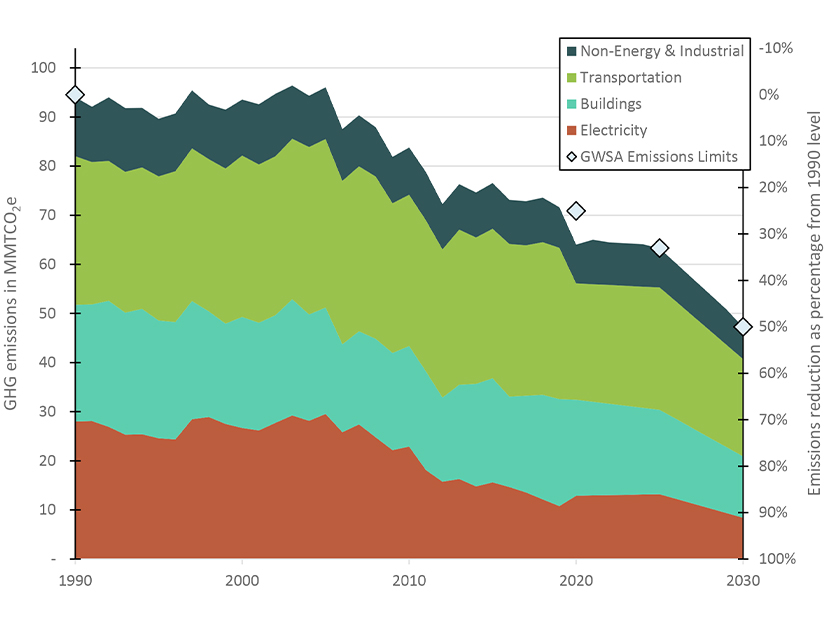Massachusetts Secretary of Energy and Environmental Affairs Bethany Card adopted state emissions limits Thursday of 33% below 1990 levels of greenhouse gas emissions by 2025 and 50% by 2030. Along with the new goals, the Baker administration released a final version of its 2025/2030 Clean Energy and Climate Plan, a broad document illustrating how the state can meet those milestones.
The plan also sets individual industry submits, aiming for 49% reductions in heating and cooling by 2030, 34% in transportation, 70% in electric power and 82% in natural gas usage, all relative to 1990 levels.
In transportation, it calls for reducing vehicle miles traveled and putting 900,000 electric vehicles on the road by 2030. To support the EV transition, the plan calls for deployment of 75,000 EV chargers. Among the actions the state will take to expand charging will be development of a model building code that municipalities can adopt requiring make-ready charging in new commercial and residential buildings.
The building emissions plan relies on improving energy efficiency in buildings and converting heating systems to electric heat pumps. Under the state’s climate law, the Department of Environmental Protection must adopt regulations for heating sources that emit GHGs to ensure the state meets the new building sector emission sublimits. According to the plan, the department will initiate a stakeholder process this year on those regulations, with a goal of finalizing them by the end of 2023 to take effect “as early as 2024.”
Plans for decarbonizing the electric power system will focus heavily on cooperation with other New England states on electricity system and wholesale market planning, and the state will invest in offshore wind and grow its solar and storage industry, the plan said. The state also expects to work with neighboring states, federal agencies and ISO-NE to develop a regional plan for OSW transmission.
Among the state’s strategies for minimizing the growth of non-energy emissions is the possible adoption of new regulations on hydroflourocarbon gases to help curb emissions from leaking refrigeration systems and natural gas infrastructure.
The plan features a commitment to equity, with a focus on ensuring that decarbonization affects communities across the state equally.
Officials also announced Thursday that the state surpassed its 2020 goal of reducing emissions by 25% below 1990 levels, reaching an estimated 31.4% decrease.
But environmental advocates called on the state government to move more aggressively to curb emissions.
“It’s clear that the state is lagging behind where we need to be in slashing climate-damaging emissions,” said Caitlin Peale Sloan, vice president of Conservation Law Foundation Massachusetts, in a statement. “This administration and the next one need to prioritize real movement in existing policies to match the analysis in this plan, which relies heavily on vague proposals for programs yet to be developed.”
She said CLF will be pushing officials to improve on the plan.



